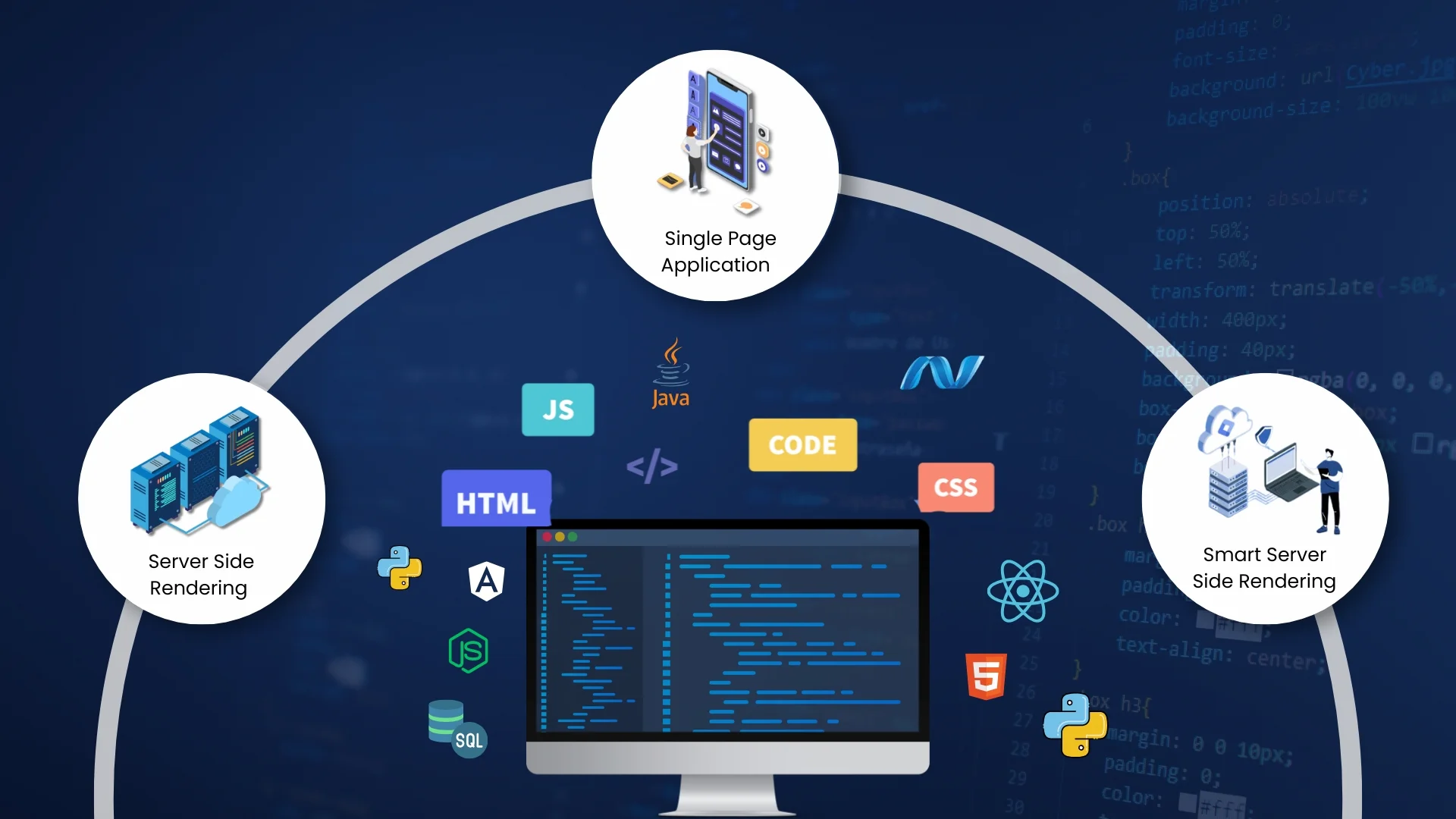Introduction
The cornerstone of developing an AI and ML product is the strategic selection of an efficient database right from the start. The database serves as the foundation upon which powerful algorithms and models are built, making it a crucial element in the success or failure of initiatives. In this blog post, let’s delve into the top 10 AI and ML databases specifically tailored for application requirements that prioritize scalability, flexibility, and speed in handling vast amounts of unstructured data. From their unique features to their compatibility with various frameworks, choose the best options available to drive innovation and efficiency for AI and ML projects.
Table of Contents
- Introduction
- Traditional Databases vs. AI and ML Databases
- Features you should consider when choosing an AI and ML databases
- Vectors Databases
- Microsoft SQL Server
- MongoDB
- PostgreSQL
- DynamoDB
- Redis
- Elasticsearch
- Cassandra
- Neo4j
- InfluxDB
- Factors you should consider while choosing an AI and ML databases
- Conclusion
- Why Sparity?
- FAQs
Traditional Databases vs. AI and ML Databases
While we often think that we use traditional databases like OracleDB, there are reasons to opt for other contexts such as AI and ML databases . Traditional databases are optimized for structured data storage and transactions, whereas AI and ML databases specialize in handling vector data and complex queries. They offer specialized indexing, similarity search, and clustering for tasks like recommendation systems and deep learning. Structured databases like MySQL are also used in AI and ML applications for storing labels and pre-processed data. These databases complement AI and ML databases, which excel in vector operations and calculations, enhancing performance in tasks like model training and inference.
Features you should consider when choosing an AI and ML databases
Vectors Databases
Vectors is an open-source, lightweight database specifically designed for machine learning and AI workloads. It focuses on embeddings and similarity searches, making it great for recommendation systems and content retrieval.
Purpose: Recommendation systems, anomaly detection, content retrieval, and embedded
Data Type: Vectors is designed to store embeddings and vectors, such as word embeddings, image features, and product representations.
Schema and Data Model: Points, Vector Fields, Metadata, and Geometries
Indexing: Spatial indexing and metric indexing
Querying: Range Queries, K Nearest Neighbors (KNN), and Window Queries
Similarity Searches: Cosine Similarity, Euclidean Distance, and Jaccard Similarity
Aggregations: Clustering and Summarization
Language Support: SQL Extensions, APIs and Libraries, Client Libraries, and Custom Query Languages
Microsoft SQL Server
While it may not be specialized for handling vector data and complex AI and ML queries out of the box like some other databases, SQL Server is a robust and widely used relational database management system (RDBMS) that can be integrated into AI and ML workflows for data management, analysis, and business intelligence.
Purpose: Healthcare data management, sentiment analysis, marketing trends, and financial forecasting
Data Type: SQL Server is well-suited for storing structured data, such as patient records, financial transactions, and social media posts.
Schema/Data Model: SQL relational database system by Microsoft.
Querying: T-SQL (Transact-SQL), a proprietary extension of SQL with additional features.
Language Support: T-SQL is the main language, with support for.NET languages like C# for stored procedures and functions.
MongoDB
MongoDB is a flexible, document-based NoSQL database. It stores data in JSON-like documents, making it easy to work with for developers.
Purpose: Real-time analytics, social media analytics, and personalization and recommendation systems
Data Type: Ideal for storing unstructured data, such as user-generated content, social media posts, and product reviews.
Schema/Data Model: NoSQL document-oriented database. Uses BSON (binary JSON) for data storage.
Querying: MongoDB Query Language (MQL) supports complex queries and aggregation pipelines.
Language Support: Drivers are available for many programming languages (e.g., Python, Java, Node.js).
PostgreSQL
PostgreSQL is a powerful, open-source relational database known for its reliability and robust features. It supports SQL queries and has strong support for JSON and other semi-structured data types.
Purpose: Fraud detection in financial transactions, customer segmentation in e-commerce, and predictive analytics
Data Type: PostgreSQL is suitable for storing structured data, such as financial transactions, customer profiles, and product catalogs.
Schema/Data Model: SQL relational database with support for JSON and other semi-structured data types.
Querying: SQL (Structured Query Language) supports advanced SQL features, stored procedures, and more.
Language Support: Supports a wide range of languages for procedural extensions (e.g., PL/pgSQL, PL/Python, PL/Java).
DynamoDB
DynamoDB is a fully managed, scalable NoSQL database provided by Amazon Web Services (AWS). It’s designed for applications that require single-digit millisecond response times at any scale.
Purpose: IoT data processing, real-time recommendation engines, and gaming leaderboards
Data Type: DynamoDB is suitable for storing semi-structured data, such as sensor readings, user interactions, and real-time event data.
Schema/Data Model: NoSQL database provided by AWS, key-value and document store.
Querying: The DynamoDB API supports key-based lookups, scans, and limited querying with secondary indexes.
Language Support: SDKs are available for various languages (Java, Python, Node.js, etc.) for interacting with DynamoDB.

Redis
Redis is an in-memory data structure store often used as a database, cache, and message broker. It supports various data structures and is known for its high performance and low latency.
Purpose: Real-time analytics, session storage, and caching ML model results
Data Type: Redis supports various data types, including key-value pairs, JSON, strings, and more.
Schema/Data Model: an in-memory data structure store, often used as a cache or message broker.
Querying: Redis commands for data manipulation and retrieval.
Language Support: Clients are available in many languages (Python, Java, Node.js, etc.) to interact with Redis.
LangChain leveraged redis
🦜LangChain & Redis over Financial PDFs
Excited to work with the @Redisinc team to create a RAG template for developers to chat with public financial PDF documents such as Nike’s 10k filings. The application uses:
🦄FastAPI and Uvicorn to serve client requests via HTTP
🔃… pic.twitter.com/YOd3CaxDUc— LangChain (@LangChainAI) December 19, 2023
Elasticsearch
Elasticsearch is a distributed, RESTful search and analytics engine designed for horizontal scalability, reliability, and real-time search.
Purpose: Log analysis, natural language processing (NLP), and semantic search
Data Type: Elasticsearch supports text data, logs, unstructured data, and structured data formats.
Schema/Data Model: NoSQL search engine, document-oriented.
Querying: Elasticsearch Query DSL allows complex full-text and structured search queries.
Language Support: RESTful API, with client libraries available for many languages (Python, Java, JavaScript, etc.).
Cassandra
Cassandra is a distributed, highly scalable NoSQL database designed for high availability and fault tolerance. It’s optimized for write-heavy workloads and can handle large amounts of data across multiple nodes.
Purpose: Time-series data analysis, IoT sensor data storage, and log data analysis
Data Type: Cassandra is well-suited for storing time-series data, sensor readings, log events, and other time-ordered data.
Schema/Data Model: NoSQL distributed database, column-family store.
Querying: CQL (Cassandra Query Language), similar to SQL but optimized for Cassandra’s architecture.
Language Support: Drivers are available for Java, Python, Node.js, and more.
Neo4j
Neo4j is a graph database optimized for storing and querying graph data. It uses nodes, relationships, and properties to represent and store data.
Purpose: Fraud detection, social network analysis, and knowledge graphs
Data Type: Neo4j is designed for storing graph data, including nodes representing entities, relationships between nodes, and properties describing nodes and relationships.
Schema/Data Model: Graph database with nodes, relationships, and properties.
Querying: Cypher Query Language, designed for graph traversal and querying.
Language Support: Cypher is the primary language, with drivers for Java, Python, JavaScript, and others.
InfluxDB
InfluxDB is a time-series database designed for handling high write and query loads. It’s optimized for collecting, storing, and analyzing time-stamped data.
Purpose: Monitoring and alerting, IoT sensor data storage, and energy consumption analysis
Data Type: InfluxDB is designed for storing time-series data, including sensor readings, monitoring metrics, and event logs.
Schema/Data Model: Time-series database optimized for storing and querying time-stamped data.
Querying: InfluxQL or Flux (since InfluxDB 2.0), tailored for time-series data analysis.
Language Support: Libraries and clients are available for various languages like Python, Java, and JavaScript.
Factors you should consider while choosing an AI and ML databases
Conclusion
As we have briefed you about the features for each AI and ML Databases, to choose the right database for your product, you need to evaluate your business needs, data type, security features, and scalability issues, along with data volume, and analyze the output that you want to generate. So, we suggest you choose according to your specific and customized requirements.
Why Sparity?
Whether you want to implement a chatbot into your tool, develop an AI product, or opt for RPA, Sparity will be your strategic partner. We take care of everything, from evaluating and selecting a AI and ML databases to generating output that satisfies users. From delving into the development process of embeddings to rigorous testing and delivering the project, our technical expertise lies in strategic planning and efficient development with an expert team. Our experience in AI showcases our passion for making a change with AI.
FAQs
How does AI benefit businesses by driving digital transformation?
AI enhances operations, decision-making, and customer experiences. Through automation, data analytics, and insights, it improves efficiency and innovation, helping businesses to adapt and thrive. Read more
Why is robotic process automation (RPA) considered the future of healthcare?
RPA automates tasks, reducing errors and costs while improving patient care. It streamlines workflows, allowing healthcare professionals to focus on critical tasks, thus enhancing operational efficiency and outcomes. Read more
What role does AI play in driving digital transformation in 2024?
AI in 2024 will accelerate innovation with advanced analytics and automation. It enables personalized experiences and predictive insights, empowering businesses to optimize processes and maintain competitiveness in evolving markets. Read more
What are the 10 key considerations in AI product development?
In AI product development, key considerations include defining objectives, data quality, ethical implications, model transparency, regulatory compliance, scalability, user experience, monitoring, bias mitigation, and cost analysis for effective implementation. Read more
How does RPA contribute to the future of healthcare?
RPA improves healthcare efficiency by automating administrative tasks like scheduling and billing. This allows professionals to focus on patient care, reduces errors, and enhances overall operational effectiveness in the healthcare industry. Read more














